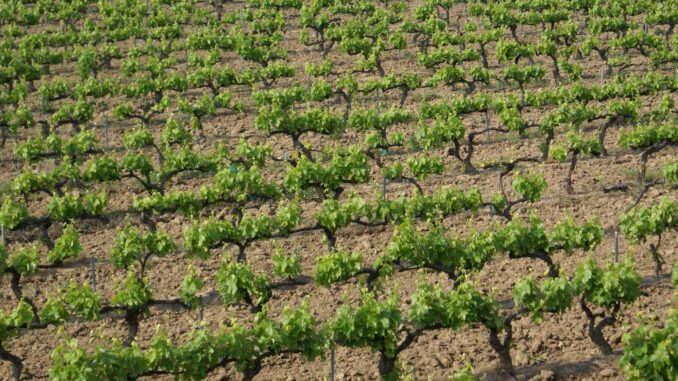
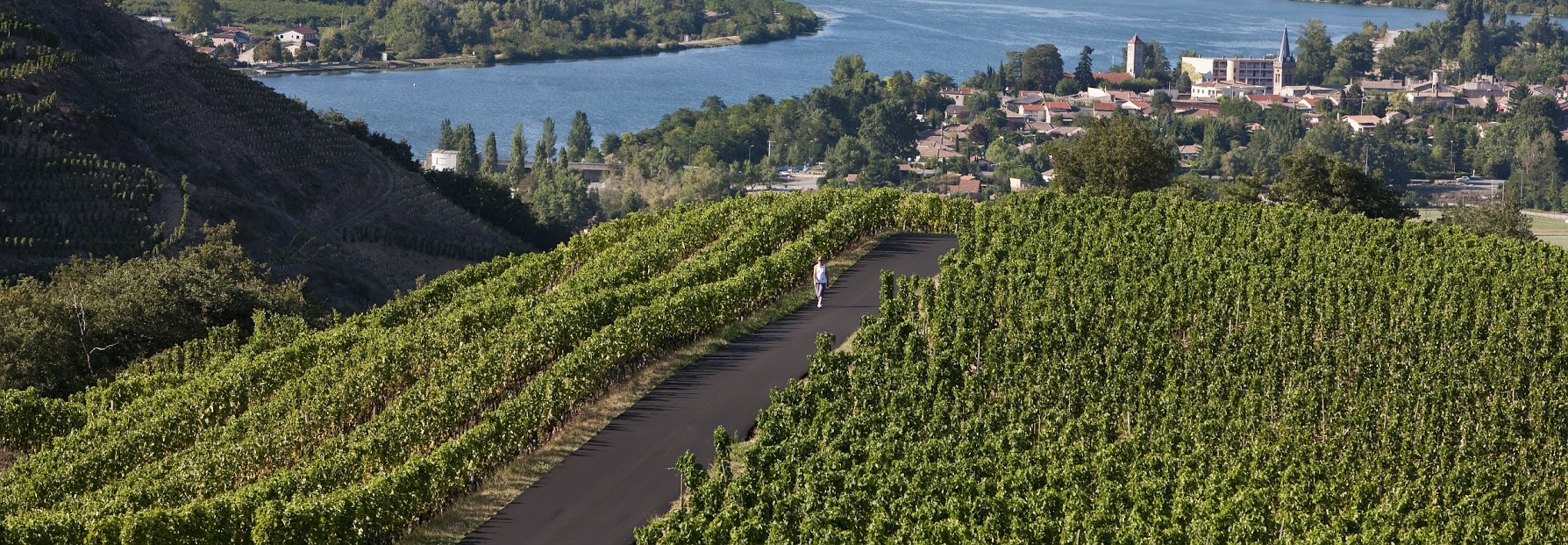
Que Syrah, Syrah—whatever will ‘V’, will Viognier…
Sinatra sang “Regrets: I’ve had a few…”
One of mine is *rushing* through our first visit to this glorious region. Fresh off the heels of Spain’s intense fruit bombs, followed by the flirty, fruity Languedoc-Roussillon… by the time we ranged-the-Rhône, our eyes were actually focused on the Burgundian prize the other side of Lyon.
In our arrogance, we thought we *knew* Syrah and Viognier. Having lived in Napa/ Sonoma with multiple trips to Australia under our belt (Down Under’s Shiraz–rhymes-with-jazz), our presumptuousness caused us to focus on just four main appellations here, practically ignoring the rest. What a mistake!
Further de-motivating was an unusually terrible Rhône Spring: intermittent snow, perpetual rain, arrested budbreak, drab skies, and boring photos of short gnarly sticks popping out of the Martian landscape in organized rows. We tried to adopt an air of je ne sais quoi, but at that point (castle/scenery/palate-fatigue) had claimed our Souls… (Yeah, I know, cry me a river—a Rhône, in fact!)
We knew little except our deep respect for Hermitages and Côte-Rôties. State-side, our Châteauneuf-du-Pape exposure had been limited, so we made a point of visiting there. And we left one more destination up to chance, allowing Fate to run its course. (Tavel won out.)
Rhône hopefuls, take heed: having since been schooled in the true glory of all the Rhone has to offer—and I don’t use that word lightly—I am big enough to admit we will definitely be back for a do-over. Dionysus and Bacchus probably spent considerable time here in ancient days when the Greeks and Romans set up shop; and this will hopefully redeem us from our early, asinine oversights.
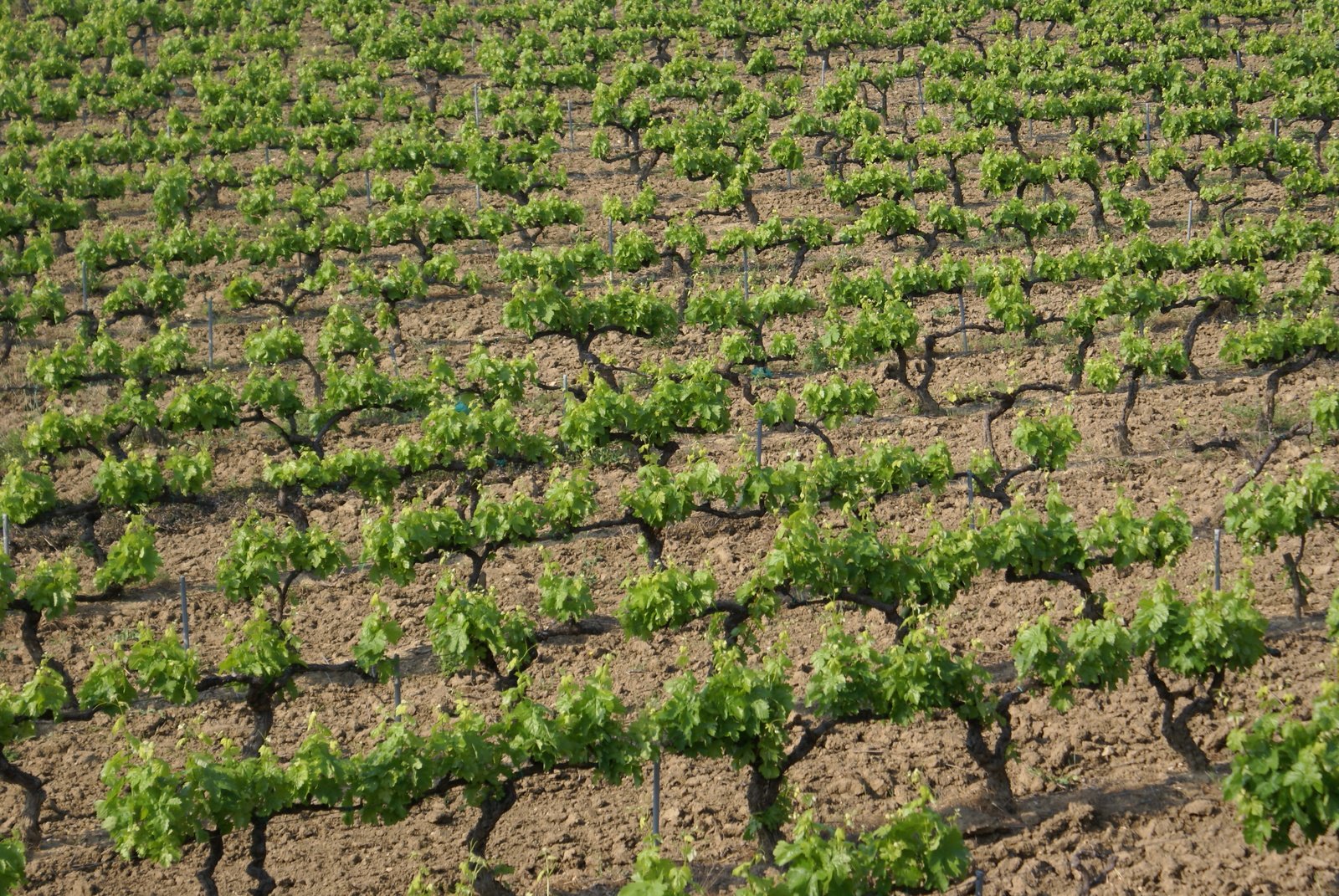
The Place
Great wines, all styles. The River is the only feature the South and North regions share.
The South resembles Provence and the Mediterranean, with lavender fields, olive trees, and broad, sunny lands.
From the South’s tippy-top, it is an hour’s drive to…
…the North, featuring near-vertical granite rock faces that require extremely-taxing vine maintenance, but offer impressive views.
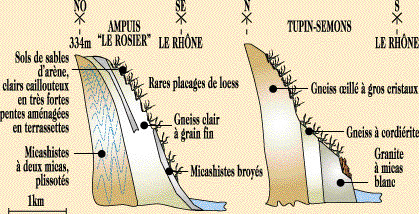
It is not a problem to find tasting caves – ranging from dingy, scruffy and humble, to pristine and modern – but appointments are usually necessary. (There are also 100+ cooperatives and negociants working on producers’ behalf in the region.) Our crime was just two “obvious” stops in the South (Châteauneuf-du-Pape & Tavel) and two more in the North (Hermitages and Côte-Rôties.) BUT, we drove through the rest, and here we share the progression of appellations between them.
Appellations are split based on whether they are LEFT (west) or RIGHT (east) of the Rhône. The confusing lay of the land and not knowing what was where contributed to our minimal plan. Having wrapped my head around it now, follow this guide and you should hit these in order(ish) as they appear, South-to-North, depending on your route:
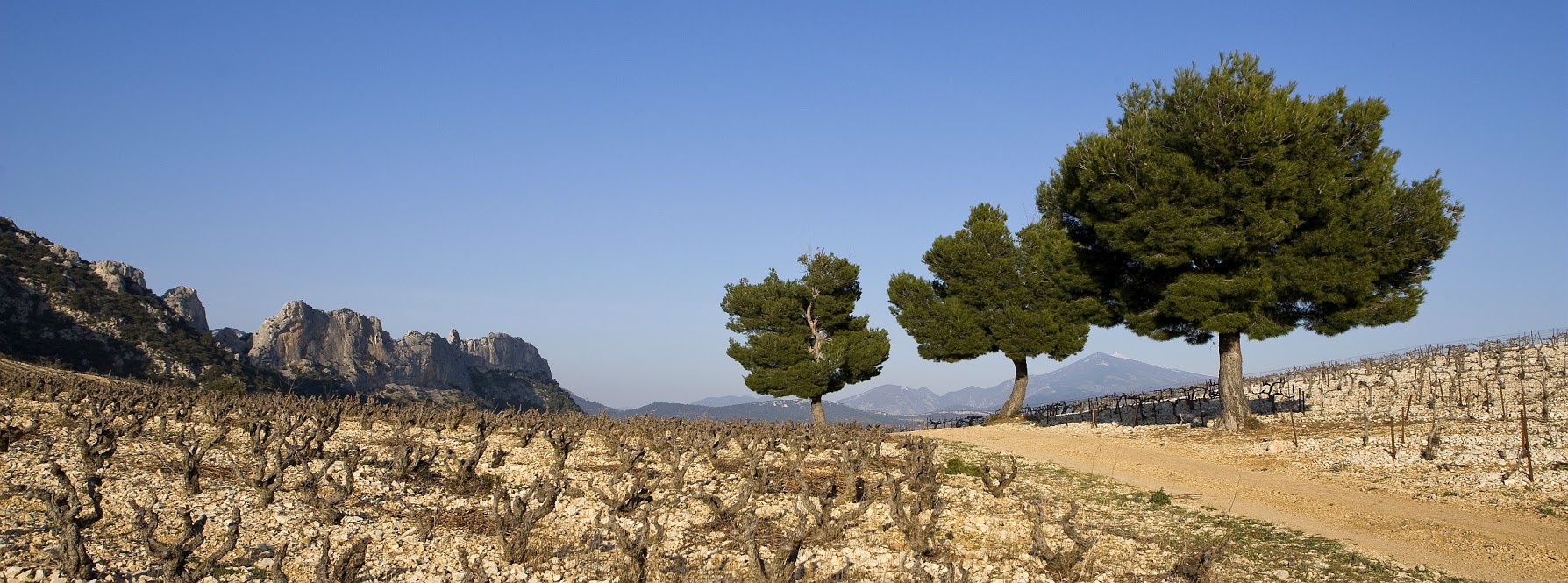
LEFT SIDE OF RHÔNE |
RIGHT SIDE OF RHÔNE |
| SOUTHERN RHÔNE | |
| BOTTOM LEFT:COSTIÈRES DE NÎMES, MUSCAT DE LUNEL, CLAIRETTE DE BELLEGARDE – (Covered in L-R post of 10/28,) Nîmes wines straddle the Languedoc, so very much share styles (and arguments regarding Parent.) There is a tiny area that produces the dry white Clairette de Bellegarde, meant to be drunk young. We didn’t try/ might be losing steam. Lunel’s Muscats are dessert wine. If you have experience with either, please comment! | BOTTOM RIGHT:COTEAUX D’AIX-EN-PROVENCE/LES BAUX – Technically Provence, but wines straddle styles here too. It’s really pretty, so “when-in-Rome… (ahem) Rhone…” might as well if you have the time. (See photo.) |
| TAVEL – Yummy, solid, dry, grenache rosés | CÔTES DU LUBÉRON – Rhone-meets-Provence-style light juicy reds; dry whites; and soft, fruity rosés |
| LIRAC see CHÂTEAUNEUF-DU-PAPE | CÔTES DU VENTOUX – Grenache, Syrah, Mourvedre, Cinsault blended reds & rosés. Lighter & younger. |
| CÔTES DU RHÔNE/(&) –VILLAGES – 85% red wine, 5% dry white, the rest rosé, plus a tiny amount of dessert. All the staples across all ranges of high to average. | CHÂTEAUNEUF-DU-PAPE – “New House of the Pope” (Photo) Named after relocating the ‘Supreme Pontiff’ from Rome to nearby Avignon just south. Marble-to-palm-size stones cover red clay soil that hold in precious heat and moisture for Grenache/ Syrah blends (7 other varietals allowed, including Mourvedre, Cinsault, Marsanne…) Nearby Gigondas, Vacqueyras and Lirac are similar styles, but not long-term ‘Keepers’ like the C-d-P’s 6-year average and 12 year ‘bests’. |
| MUSCAT DE BEAUMES-DE-VENISE – A+ dessert wines | |
| VACQUEYRAS see CHÂTEAUNEUF-DU-PAPE | |
| GIGONDAS see CHÂTEAUNEUF-DU-PAPE | |
| TOP-MOST AREA BEFORE 1-HOUR DRIVING GAP:CÔTES DU VIVARAIS – 80% red wines from Grenache, Syrah, Carignan & Cinsault. 15% rosé wines. 5% white from Clairette, Grenache, Marsanne. | TOP-MOST AREA BEFORE 1 HOUR DRIVING GAP:COTEAUX DU TRICASTIN, Also GUIGNAN-LES-ADHÉMARMore acidic red, white & rosé wines than general Côtes-du-Rhônes |
| NORTHERN RHÔNE | |
| ST. PÉRAY – (K MacNeil calls “inconsequential”, sorry!) | CROZES-HERMITAGE & HERMITAGE The Rhône rival to Bordeaux & Burgundy, Hermitage is the pinnacle Syrah, age-able to 20+ years, complete with back story of regretful Crusader who set up shop, here. The CROZES-H… area surrounds the nucleus, offering very similar styles (Syrah blended with whites Marsanne & Rousanne) with *slightly* diminished prices and aging capability (5+ yrs). |
| CORNAS – Far more affordable: solid Syrah offerings just opposite the River from Croze-Hermitage. 7-10 yrs. | |
| ST. JOSEPH – 80% reds. Best drunk between 3-6 yrs. | |
| CHÂTEAU GRILLET – Tiny area inside Condrieu with higher-acid Viognier so it can age longer than 4 yrs.. | |
| CONDRIEU – Elegant, flinty Viogniers – drink by 4 yrs. | |
| CÔTE RÔTIE – “The Roasted Slope” offers majestic reds that tend to be blended with 5+% Viognier for finesse. The “silver” just behind Hermitage’s “gold”. | |
| Table ©Lori Stevens, 2015, all rights reserved | |
Won’t hit the Rhône anytime soon? Voilà! Pairing tips to drink these beauties at home; perfect for hearty winter fare thanks to:
- Strong tastes of white and black pepper (reds);
- Difficulty harvesting (means lots of sticks and stems lend pronounced structure via tannins);
- Powerful, full-bodied flavors coupled with…
- Fruity elegance from complex blends, which may include white grapes in the reds.
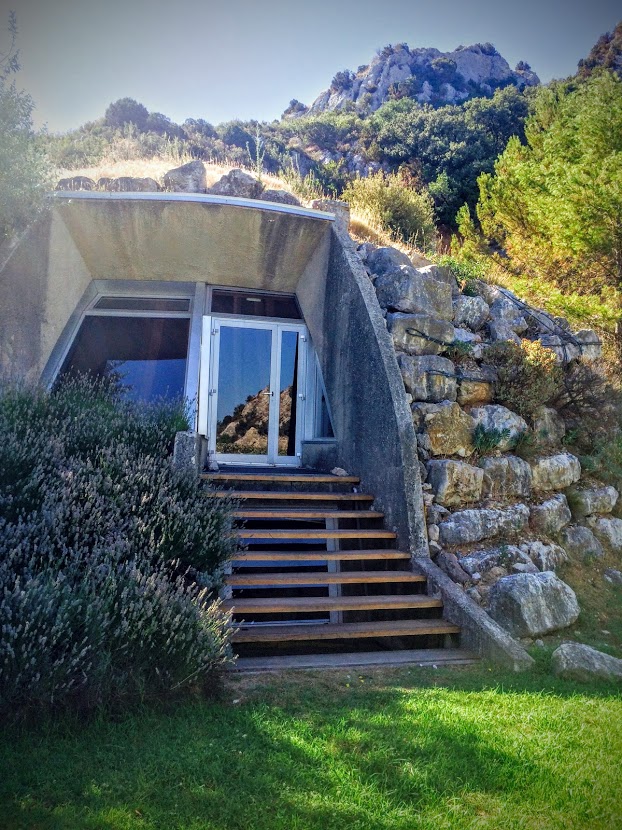
The Reds: A natural pair with lamb, also try with shepherd’s pie and any red meat dishes with a little ‘spice’ such as Mexican or South American-inspired stews, molés and sauces, even chili. Also wonderful with cheese – especially the stinky, smelly, raw and unpasteurized kinds that curl nose hairs.
The Whites: Viognier is complementary to many Thai and Indian dishes – especially if you want to foil a particularly hot and spicy zing. Also, I personally enjoy them with rich and creamy potato-leek soup with herb garnish and any food that benefits from nuances of peach, melon or honey (like a spring green salad with goat cheese and pecans).
I love Jancis Robinson’s varietal information, so click here to learn more about this special grape at her website.
And now, introducing the BEST regional-focused wine website I have come across to date, period. The Inter-Rhône organization has compiled an incredible stockpile of information on all-things-Rhône [appellations, producers, varietals, names, bookings, trails, et.al.]
Props: Both the Inter-Rhône and my friend Kathleen Butler gave permission to use their sunny photos instead of my gray, barren ones…
Explore. Plan. Go! (We’ll be back…)
Santé!
Lori Stevens, former wine magazine food editor has worked for wineries and traveled extensively through most of the world’s wine, craft beer, cider, and scotch-producing regions. Author of Wine: A No Snob Guide: Drink Outside the Box, Berkeley: Rockridge Press, 2015; she currently lives in Seattle.
